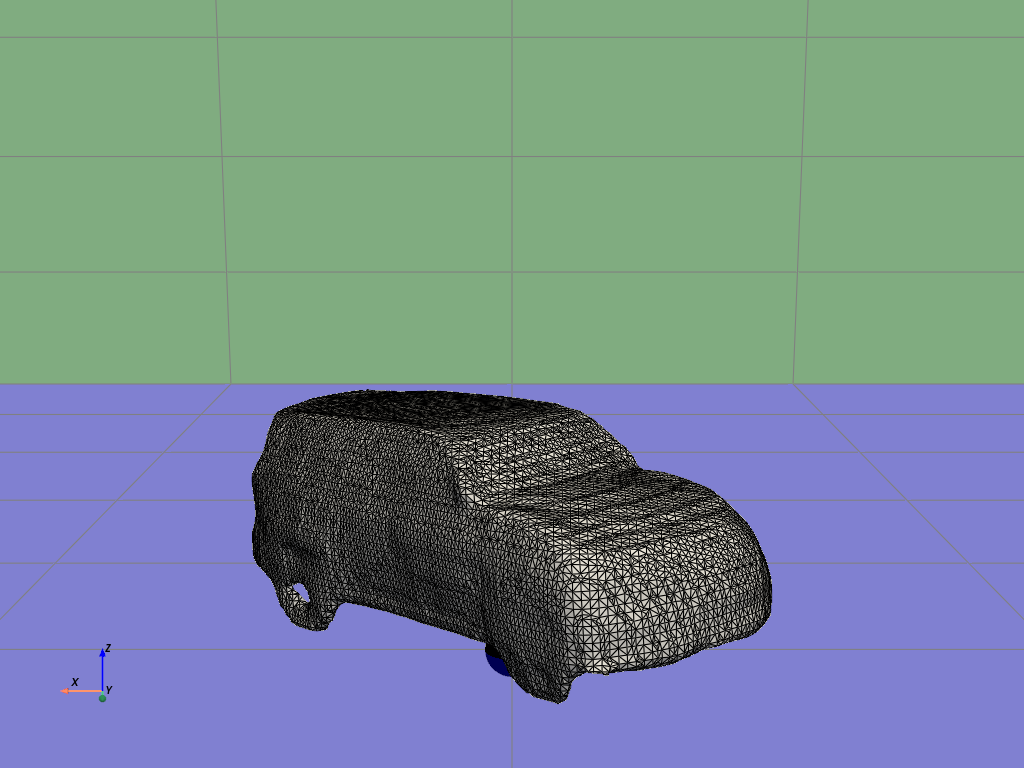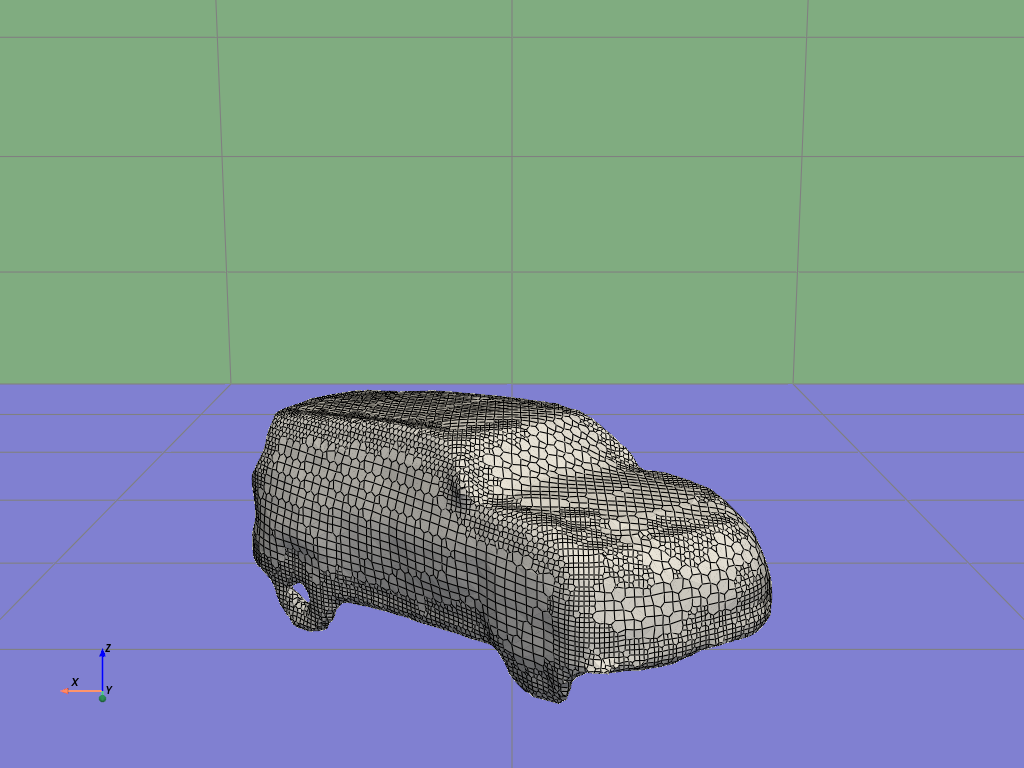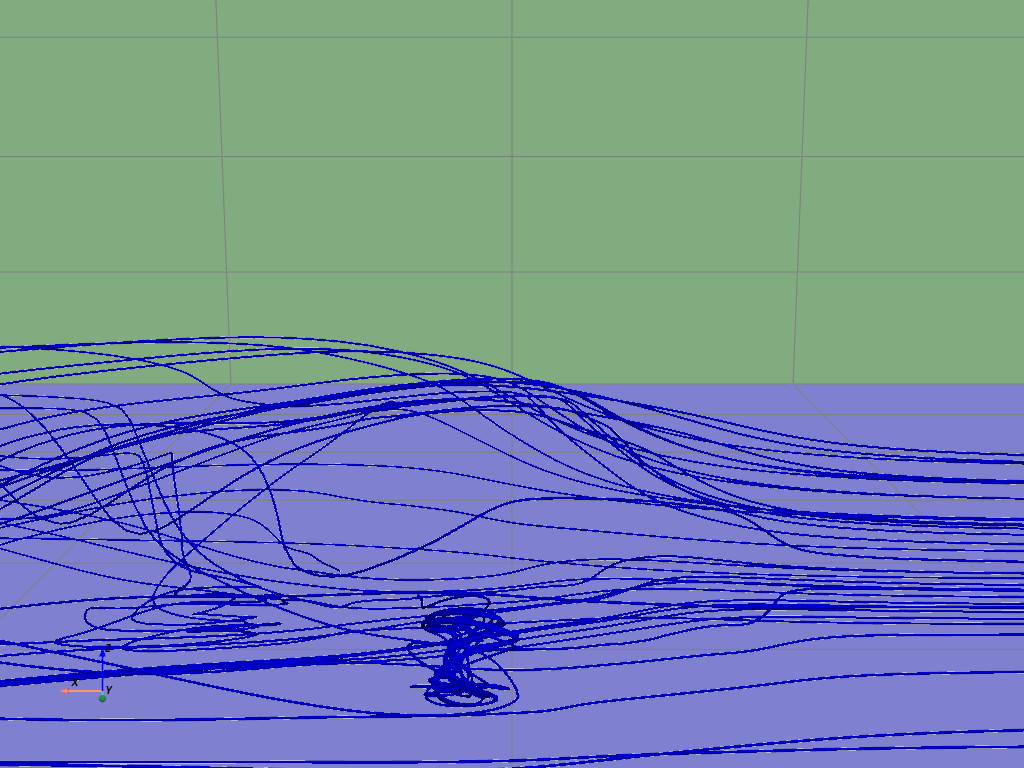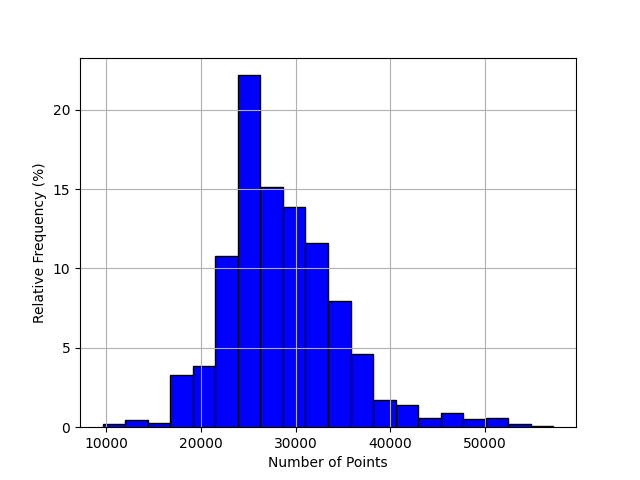Datasets:
pretty_name: Wind Tunnel 20K Dataset
size_categories:
- 10K<n<100K
task_categories:
- feature-extraction
- graph-ml
- image-to-3d
language:
- en
tags:
- simulation
- openfoam
- physics
- windtunnel
- inductiva
- machine learning
- synthetic
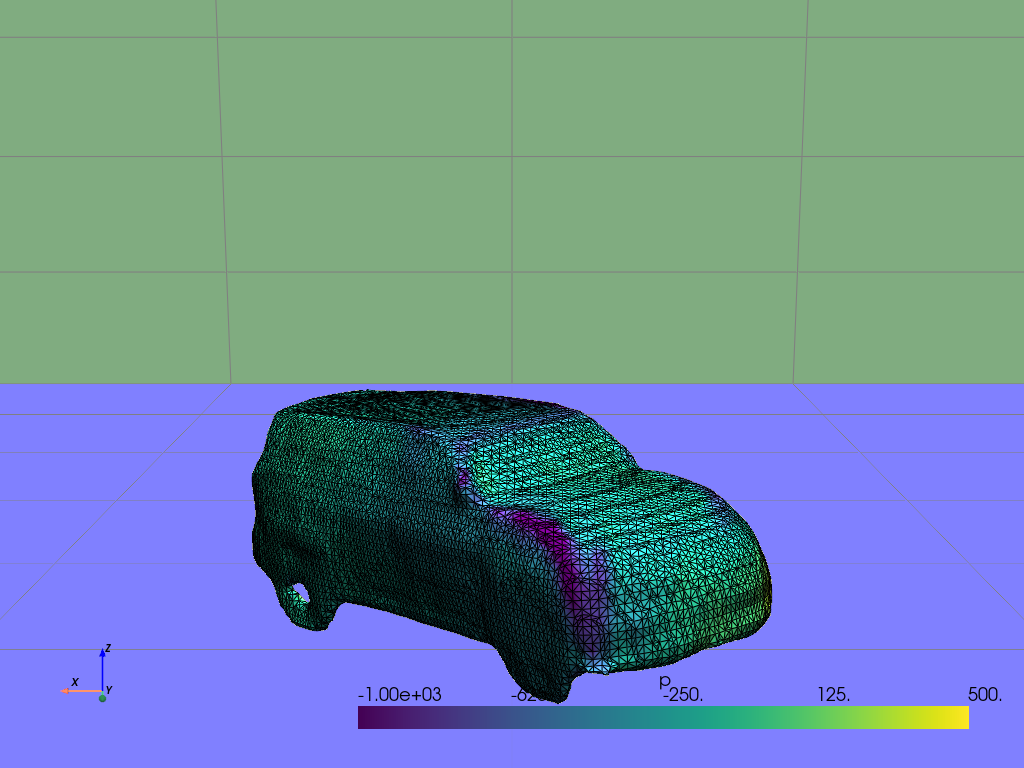
Wind Tunnel 20K Dataset
The Wind Tunnel Dataset contains 19,812 OpenFOAM simulations of 1,000 unique automobile-like objects placed in a virtual wind tunnel. Each object is simulated under 20 distinct conditions: 4 random wind speeds ranging from 10 to 50 m/s, and 5 rotation angles (0°, 180° and 3 random angles). To ensure stable and reliable results, each simulation runs for 300 iterations. The meshes for these automobile-like objects were generated using the Instant Mesh model and sourced from the Stanford Cars Dataset. The entire dataset of 20,000 simulations is organized into three subsets: 70% for training, 20% for validation, and 10% for testing.
The data generation process itself was orchestrated using the Inductiva API, which allowed us to run hundreds of OpenFOAM simulations in parallel on the cloud.
Dataset Structure
data
├── train
│ ├── <SIMULATION_ID>
│ │ ├── input_mesh.obj
│ │ ├── openfoam_mesh.obj
│ │ ├── pressure_field_mesh.vtk
│ │ ├── simulation_metadata.json
│ │ └── streamlines_mesh.ply
│ └── ...
├── validation
│ └── ...
└── test
└── ...
Dataset Files
Each simulation in the Wind Tunnel Dataset is accompanied by several key files that provide both input and output data. Here’s a breakdown of the files included in each simulation:
- input_mesh.obj: OBJ file with the input mesh.
- openfoam_mesh.obj: OBJ file with the OpenFOAM mesh.
- pressure_field_mesh.vtk: VTK file with the pressure field data.
- streamlines_mesh.ply: PLY file with the streamlines.
- metadata.json: JSON with metadata about the input parameters and about some output results such as the force coefficients (obtained via simulation) and the path of the output files.
Sample from the dataset:
- Metadata
{
"id": "1w63au1gpxgyn9kun5q9r7eqa",
"object_file": "object_24.obj",
"wind_speed": 35,
"rotate_angle": 332,
"num_iterations": 300,
"resolution": 5,
"drag_coefficient": 0.8322182,
"moment_coefficient": 0.3425206,
"lift_coefficient": 0.1824983,
"front_lift_coefficient": 0.4337698,
"rear_lift_coefficient": -0.2512715,
"input_mesh_path": "data/train/1w63au1gpxgyn9kun5q9r7eqa/input_mesh.obj",
"openfoam_mesh_path": "data/train/1w63au1gpxgyn9kun5q9r7eqa/openfoam_mesh.obj",
"pressure_field_mesh_path": "data/train/1w63au1gpxgyn9kun5q9r7eqa/pressure_field_mesh.vtk",
"streamlines_mesh_path": "data/train/1w63au1gpxgyn9kun5q9r7eqa/streamlines_mesh.ply"
}
Dataset Statistics
The dataset comprises 19,812 valid samples out of a total of 20,000 simulations, with 188 submissions failing due to numerical errors in OpenFOAM. The complete dataset requires X GB of storage. Below, the histograms illustrate the distribution of points:
Downloading the Dataset:
To download the dataset you have to install the Datasets package by HuggingFace:
pip install datasets
1. Using snapshot_download()
import huggingface_hub
dataset_name = "inductiva/windtunnel-20k"
# Download the entire dataset
huggingface_hub.snapshot_download(repo_id=dataset_name, repo_type="dataset")
# Download to a specific local directory
huggingface_hub.snapshot_download(
repo_id=dataset_name, repo_type="dataset", local_dir="local_folder"
)
# Download only the simulation metadata across all simulations
huggingface_hub.snapshot_download(
repo_id=dataset_name,
repo_type="dataset",
local_dir="local_folder",
allow_patterns=["*/*/*/simulation_metadata.json"]
)
2. Using load_dataset()
import datasets
# Load the dataset (streaming is supported)
dataset = datasets.load_dataset("inductiva/windtunnel-20k", streaming=False)
# Display dataset information
print(dataset)
# Access a sample from the training set
sample = dataset["train"][0]
print("Sample from training set:", sample)
OpenFoam Parameters
You can find the OpenFoam configuration files on github: https://github.com/inductiva/wind-tunnel/tree/main/windtunnel/templates
Generating the meshes
Existing object datasets have many limitations: they are either small in size, closed source, or have low quality meshes. Hence, we decided to generate our own dataset using the InstantMesh model, which is open-source (Apache-2.0) and is currently state-of-the-art in image-to-mesh generation. By leveraging it we were able to generate a large number of good quality open-source automobile meshes.
The automobile-like meshes were generated by running the image-to-mesh model InstantMesh on 1k images from the publicly available (Apache-2.0) Stanford Cars Dataset consisting of 16,185 images of automobiles.
Naturally, running the image-to-mesh model leads to meshes that may have certain defects, such as irregular surfaces, asymmetry issues and disconnected components. Therefore, after running the image-to-mesh model, we run a custom post-processing step where we try to improve the meshes quality. We used PCA to align the mesh with the main axis and we removed disconnected components.
The resulting set of meshes still have little defects, such as presence of "spikes" or "cavities" in supposedly flat areas and asymmetric shapes, among others. We consider these little defects as valuable features of the dataset not as issues, since from the point of view of the learning problem, they bring challenges to the model that we believe will contribute to obtaining more robust and generalizable models.
If you detect any clearly problematic mesh, please let us know so we can correct that issue for the next version of the Windtunnel-20k dataset.
Note: the code used to generate the meshes and postprocess them is available on github: https://github.com/inductiva/datasets-generation
What's next?
If you have any issues using this dataset, feel free to reach out to us at [email protected]
To learn more about how we created this dataset—or how you can generate synthetic datasets for Physics-AI models—visit Inductiva.AI or check out our blog post on transforming complex simulation workflows into easy-to-use Python classes.
